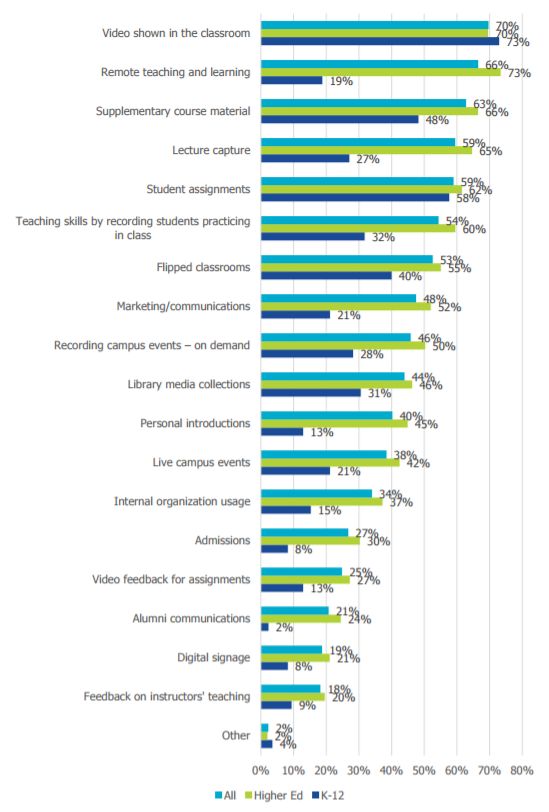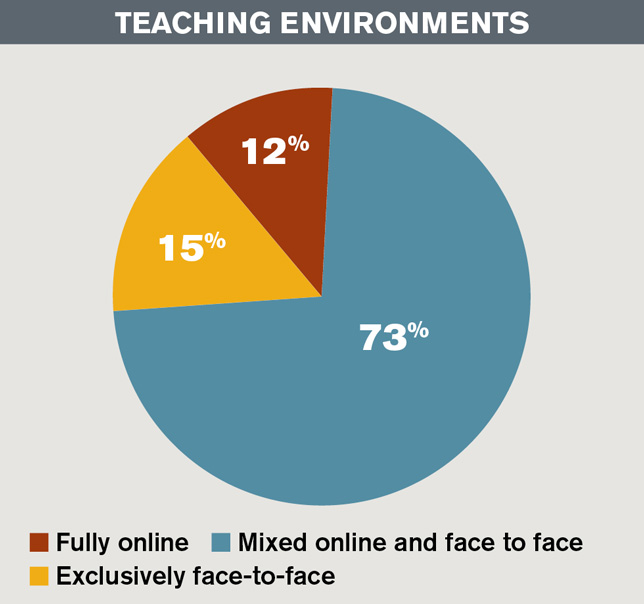Video on Its Way to Becoming Education Norm — from campustechnology.com by Dian Schaffhauser
Excerpt:
Video has become as ubiquitous in higher education classrooms as big screens in the fitness center and Hulu in residential halls. The use cases abound. The most popular use right now is to help with remote teaching and learning; 73 percent of institutions in a recent survey report the use of video for that purpose. That’s followed by the showing of video in classrooms (70 percent), as supplementary course material (66 percent) and for lecture capture (65 percent). But video is also gaining steam in student assignments, teaching skills and recording students as they practice them, recording campus events for on-demand viewing, as part of library media collections, to deliver personal introductions and to give feedback on student assignments and instructor teaching practices.
These examples aren’t the only ones cited in the latest results of Kaltura’s “The State of Video in Education.” The 2017 survey, done in May and June 2017, drew responses from more than a thousand people, 81 percent of whom work in higher ed (the rest from K–12 and other educational organizations). Most of the survey respondents hold one of four primary roles: instructional design, IT, faculty and media. Kaltura is a company that sells video products and services.
Also see:
Survey: Blended Learning on the Rise — from campustechnology.com by Rhea Kelly
Most faculty in our second annual Teaching with Technology Survey said they employ a mix of online and face-to-face instruction, and many are using the flipped model in their courses.
Excerpt:
In a nationwide survey on the use of technology for teaching and learning, an increasing number of higher education faculty members said they employ a mix of online and face-to-face learning in their courses. A full 73 percent of respondents said they use the blended model — that’s up from 71 percent in 2016. And while 15 percent of faculty are still teaching exclusively face-to-face, 12 percent have gone fully online (an increase from 10 percent teaching online in 2016).
Those findings came out of Campus Technology‘s 2017 Teaching with Technology Survey, in which we asked faculty to dish on their approach to teaching, use of technology, views of the future and more.










